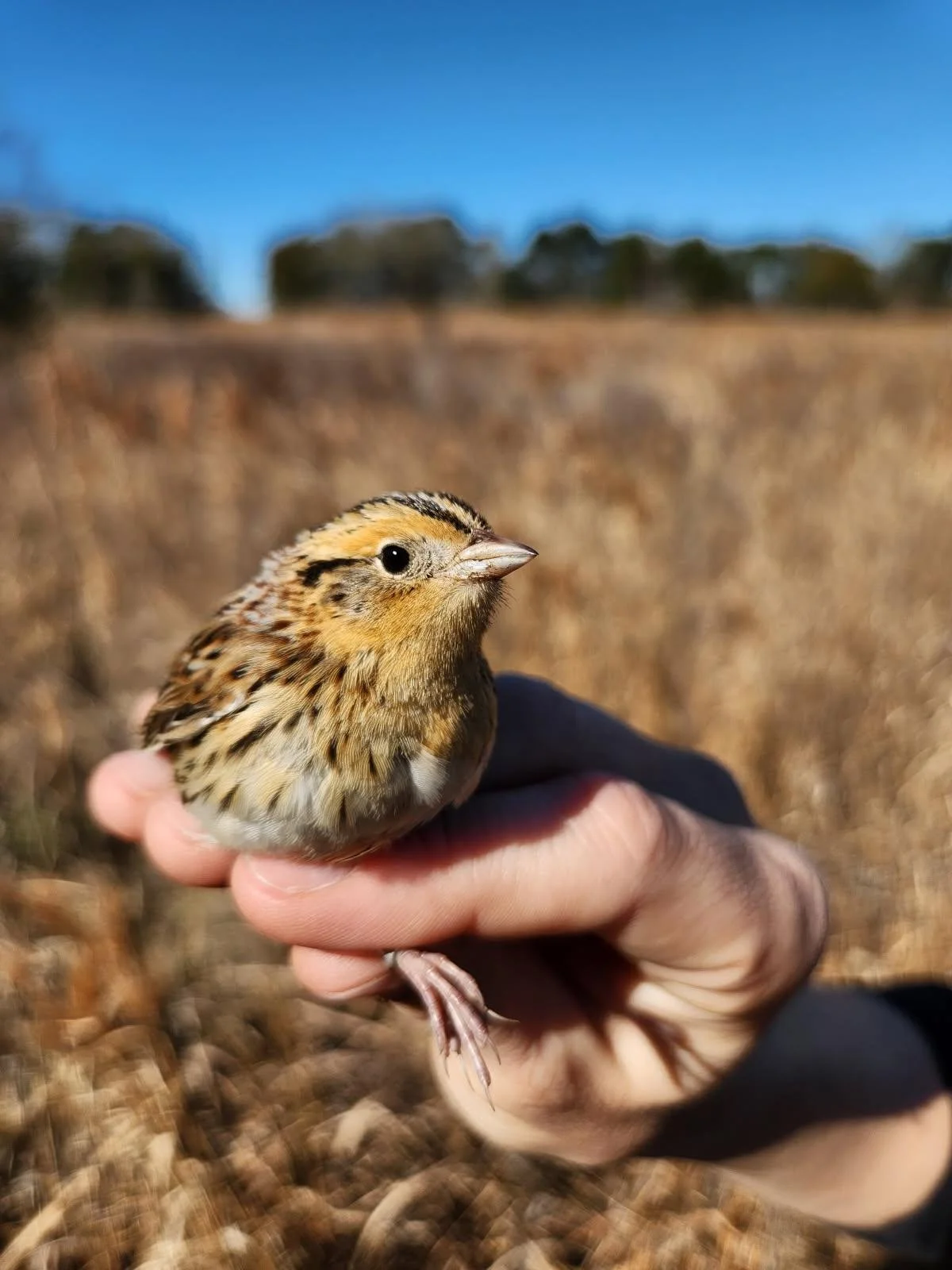Monitoring Avian Productivity and Survivorship (MAPS)
In partnership with Jefferson County Greenways Commission, we started a MAPS banding station at Ruffner Mountain in 2023. MAPS is a continent-wide collaboration aimed at understanding and conserving bird populations and their habitats. We record data that can be used to estimate things like productivity and survival, which can then tell us more about which life stages are most important in driving population changes. You can read more about the MAPS program here. Check out this overview written by Jefferson County Greenways Commission’s Jamie Nobles!
Spring & Fall Migration Banding on the Coast
The Alabama Coast is an important stopover location for neotropical migrants. For many birds, it may be the first land they stop at after a long migration over the Gulf of Mexico in the spring, or the last stop to rest and refuel before continuing migration in the fall. Conducting banding during migration can help us understand more about bird health, migration phenology, and stopover site fidelity.
Every year we conduct songbird banding for one week during spring migration at Fort Morgan and one week during fall migration at the Audubon Sanctuary on Dauphin Island. These efforts are thanks to partnerships with Mississippi State University, Alabama Department of Conservation and Natural Resources, Fort Morgan Historic Site, USFWS, and the town of Dauphin Island.
We are thankful to Alabama Tourism, Gulf Shores & Orange Beach Tourism, The Curtis & Edith Munson Foundation, and the Alabama Power Foundation for their support. Thanks to our sponsors: Saunders Yachtworks, and Bill and Paula Barnhill.
Grassland Birds in the Black Belt
As a group, grassland birds are declining faster than any other, with a 53% decline since 1970 (Rosenberg et al. 2019). This decline is largely attributed to habitat loss from conversion to agriculture and other land use practices. Historically, half of Alabama was grassland, and the Black Belt region of the state contained ~180,000 acres of grassland prairie habitat. Much of the historic prairies were lost to agriculture, grazing and development; now, less than 1% of grassland prairie habitat remains. The Alabama Wildlife Action Plan lists the Field Sparrow, Vesper Sparrow, and LeConte’s Sparrow as Watch List species.
Understanding the survival and site fidelity of these species, and others utilizing the grasslands, will provide insight into potential limiting factors during the nonbreeding season and may provide further justification for the restoration and management of Black Belt Prairies in Alabama to support birds of conservation concern.
In the winter of 2024-2025 we began a banding project at a remnant prairie and a restored prairie in the Black Belt. We banded over 200 birds and recaptured 44 individuals, showing within season site fidelity. We are looking forward to continuing this work next winter! Thanks to Elise, Hazel and Mitchell for letting us conduct this work on their property!



